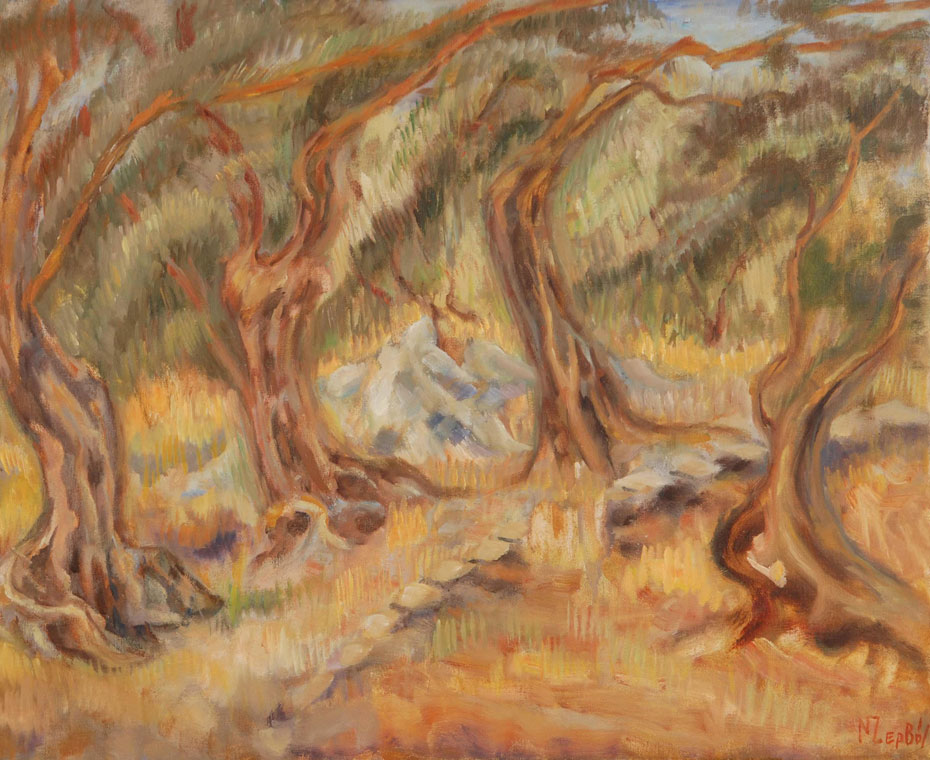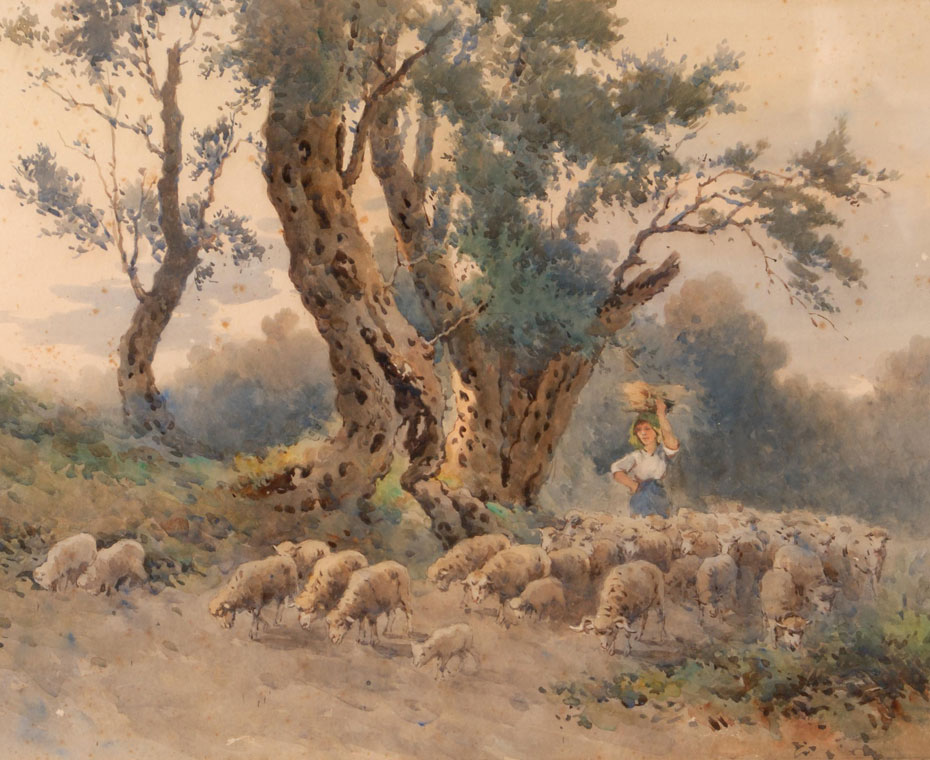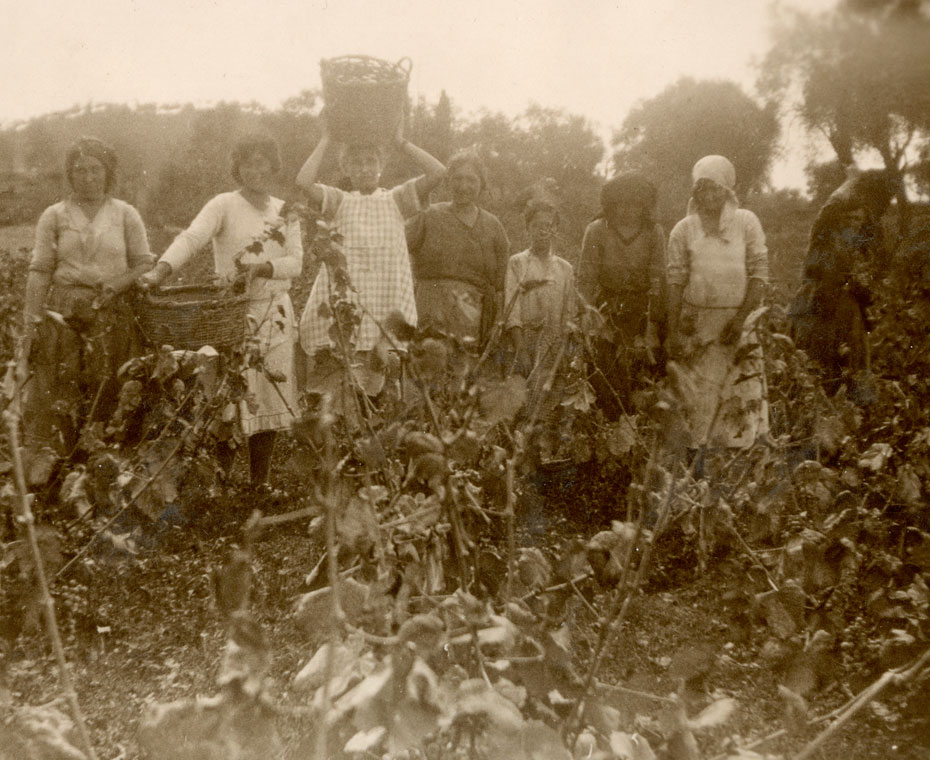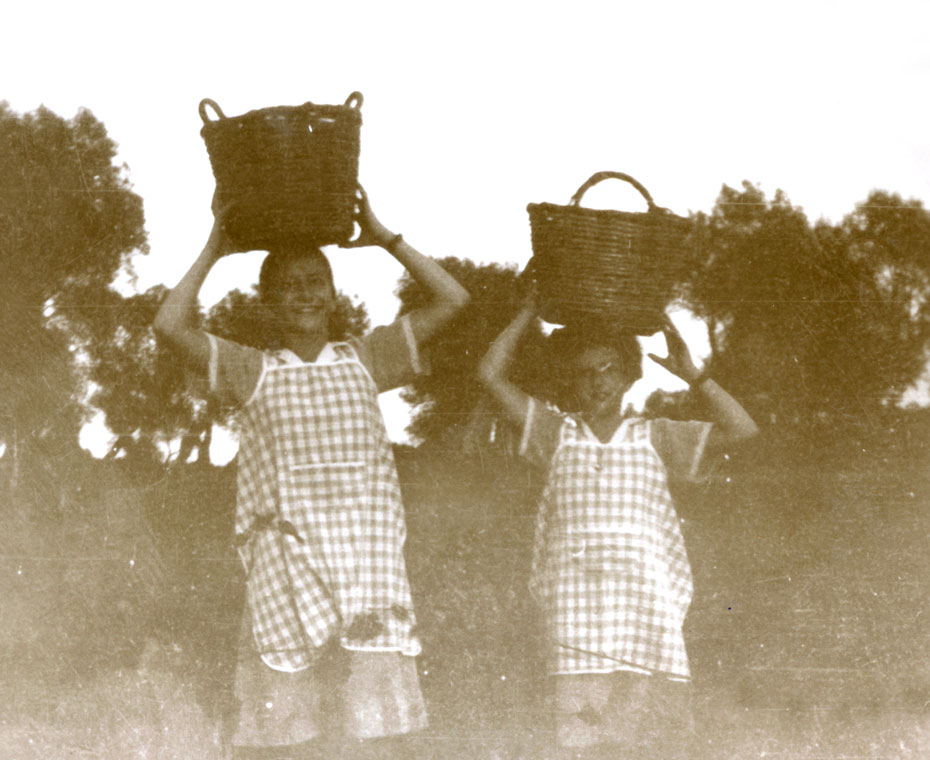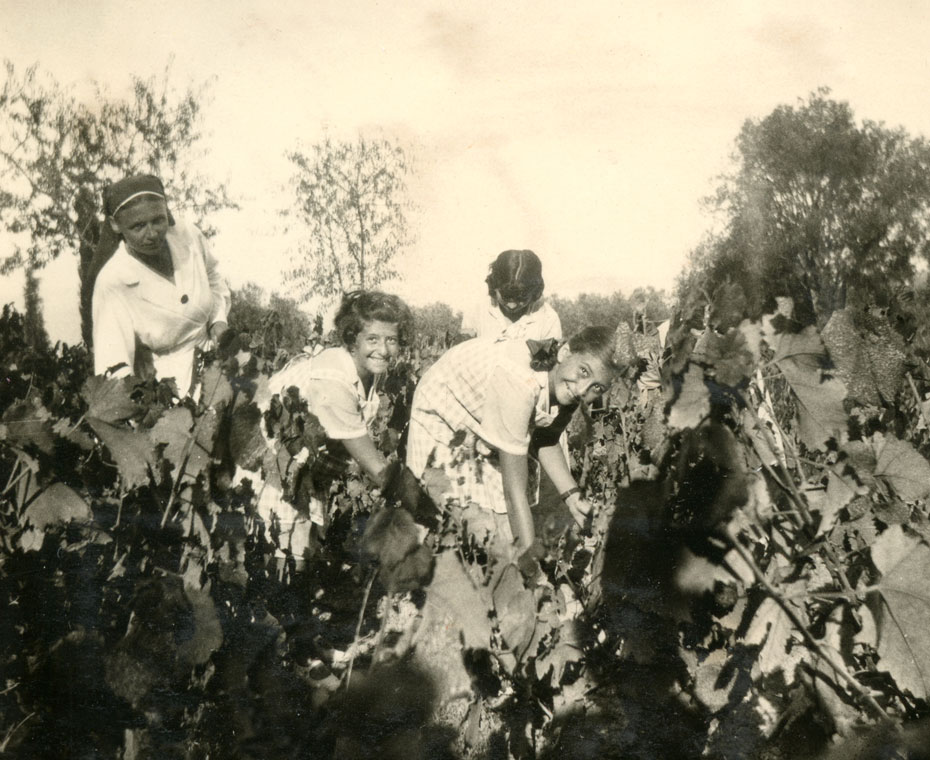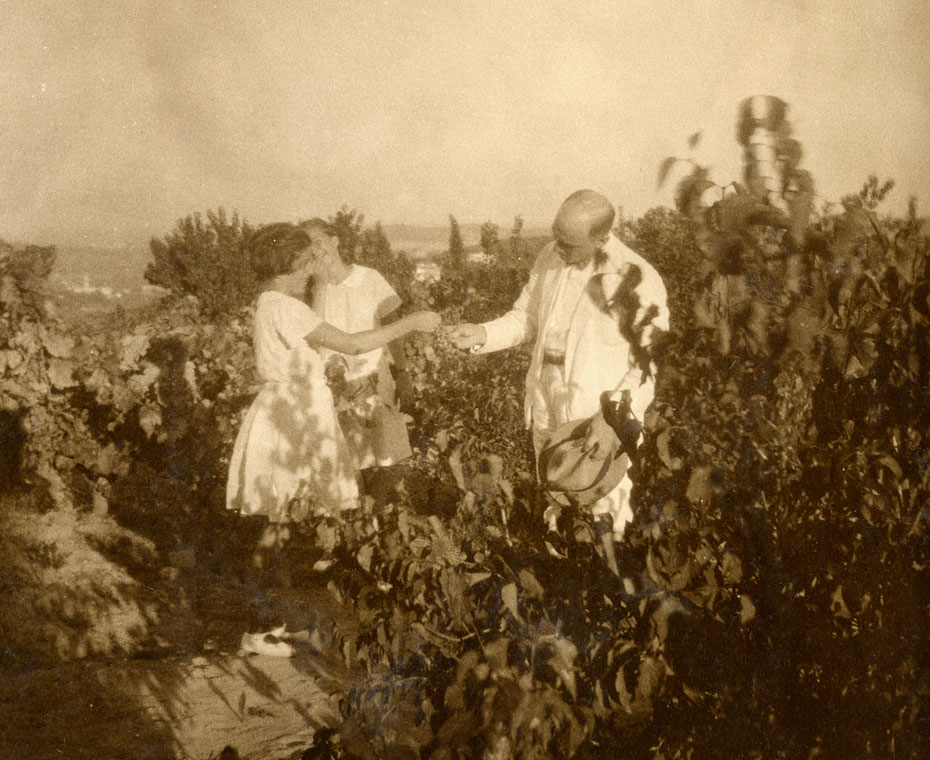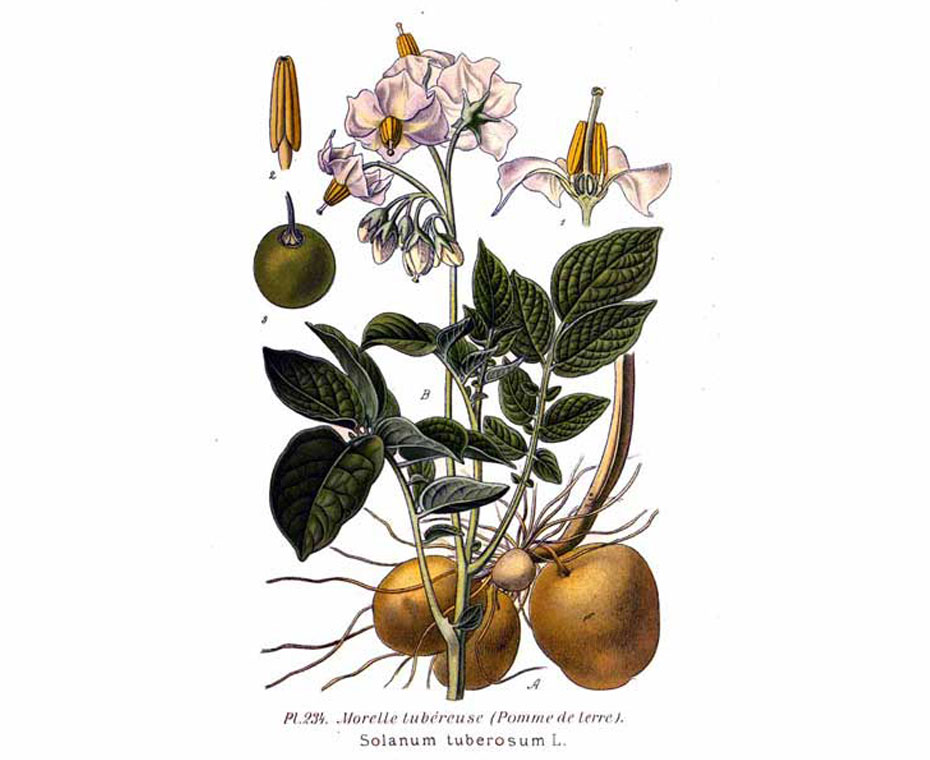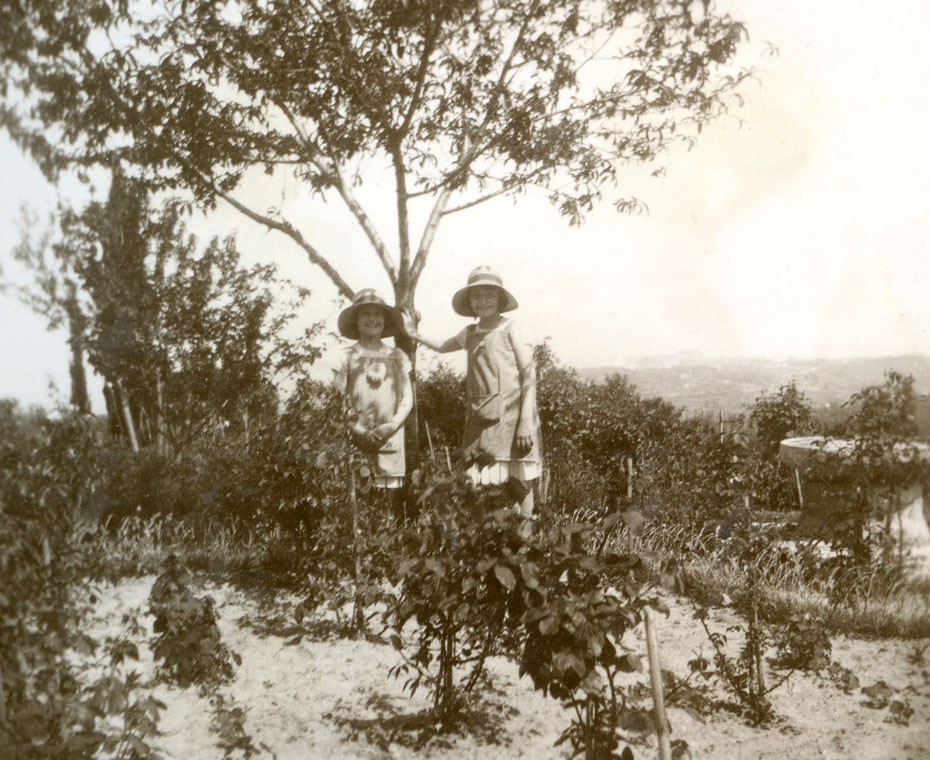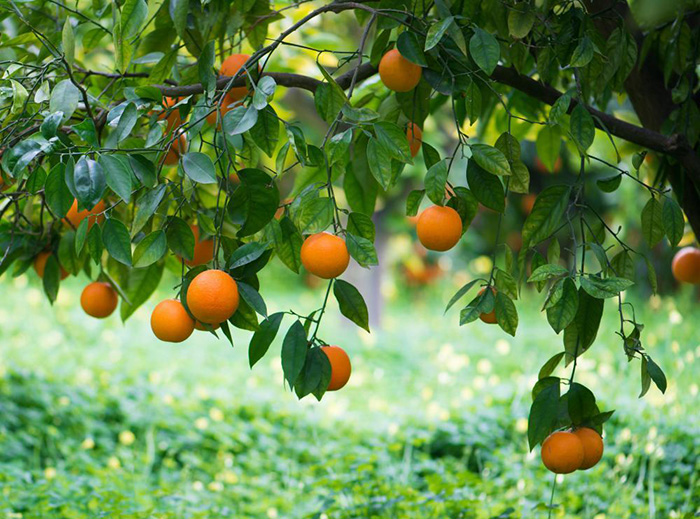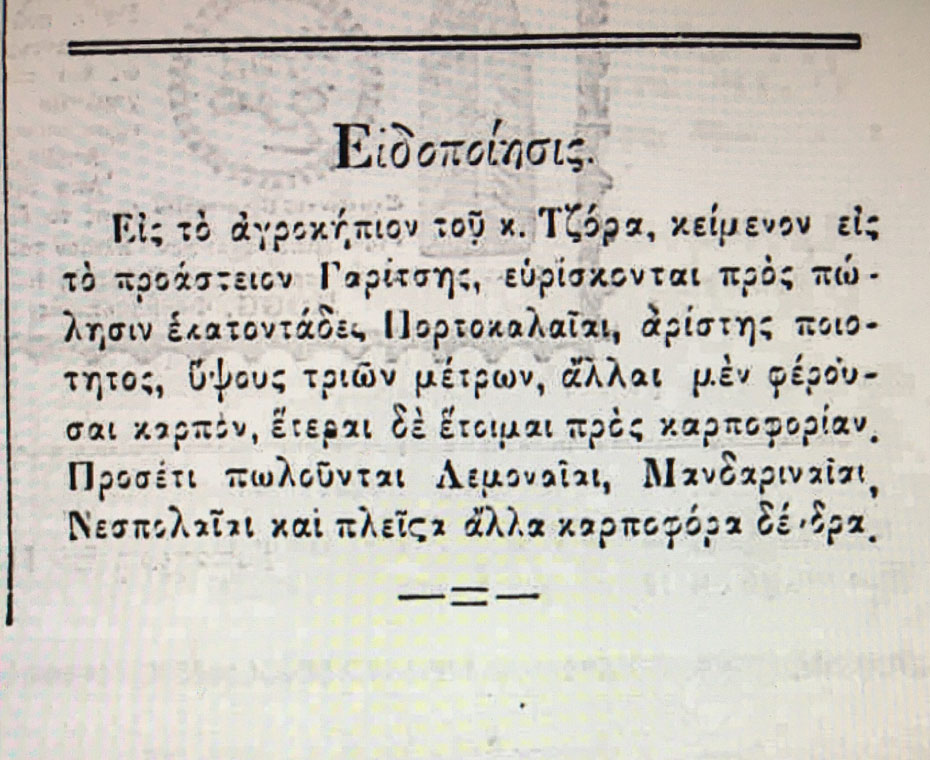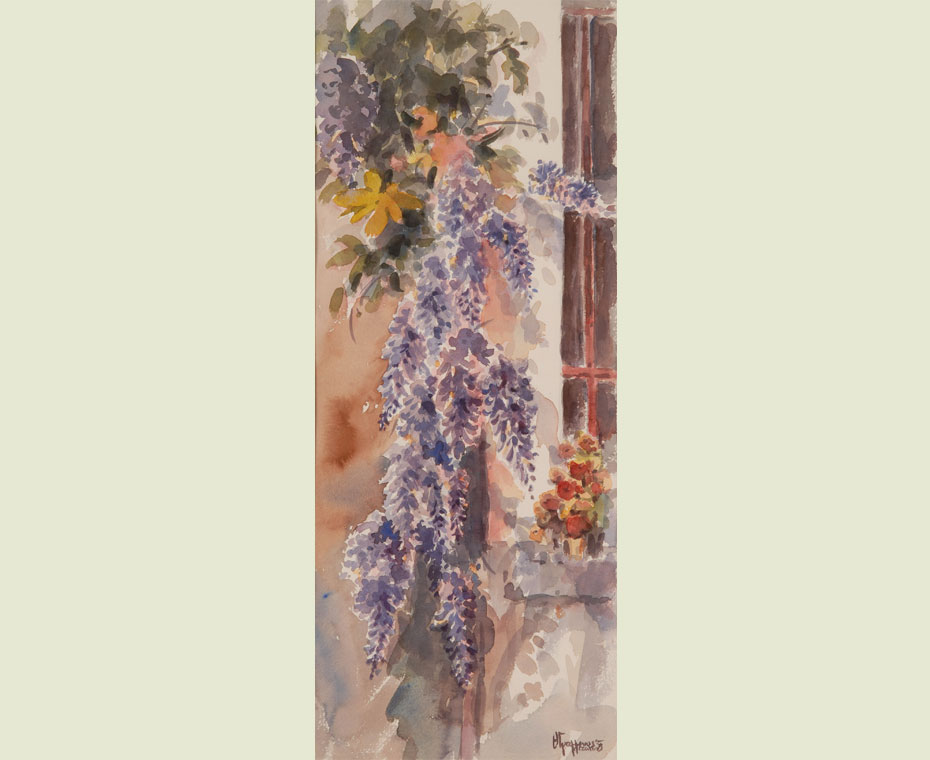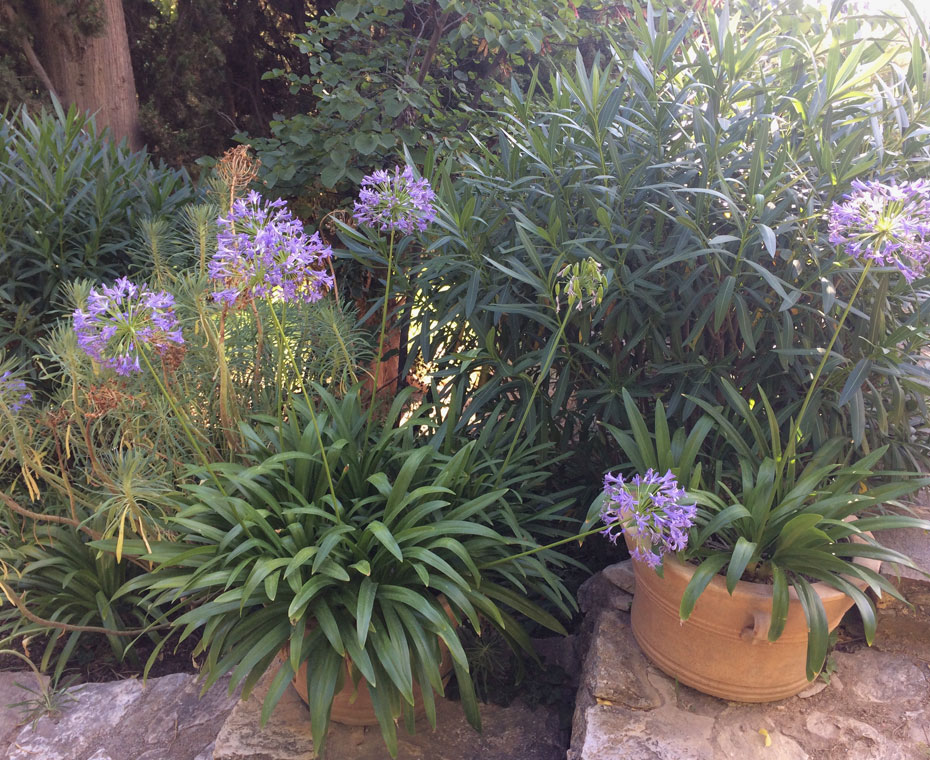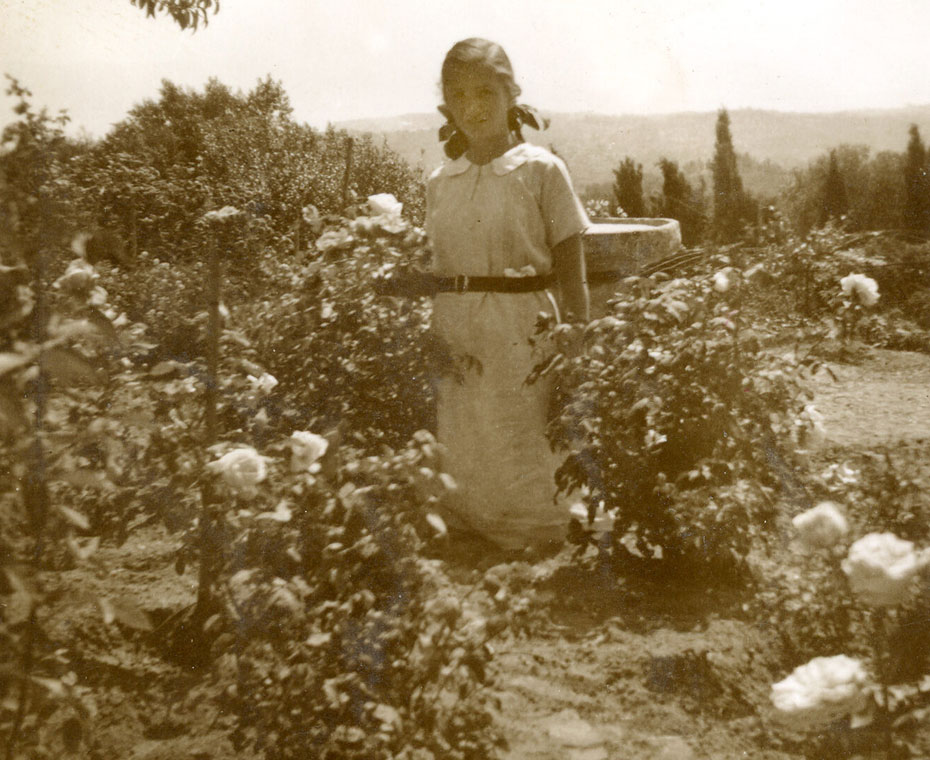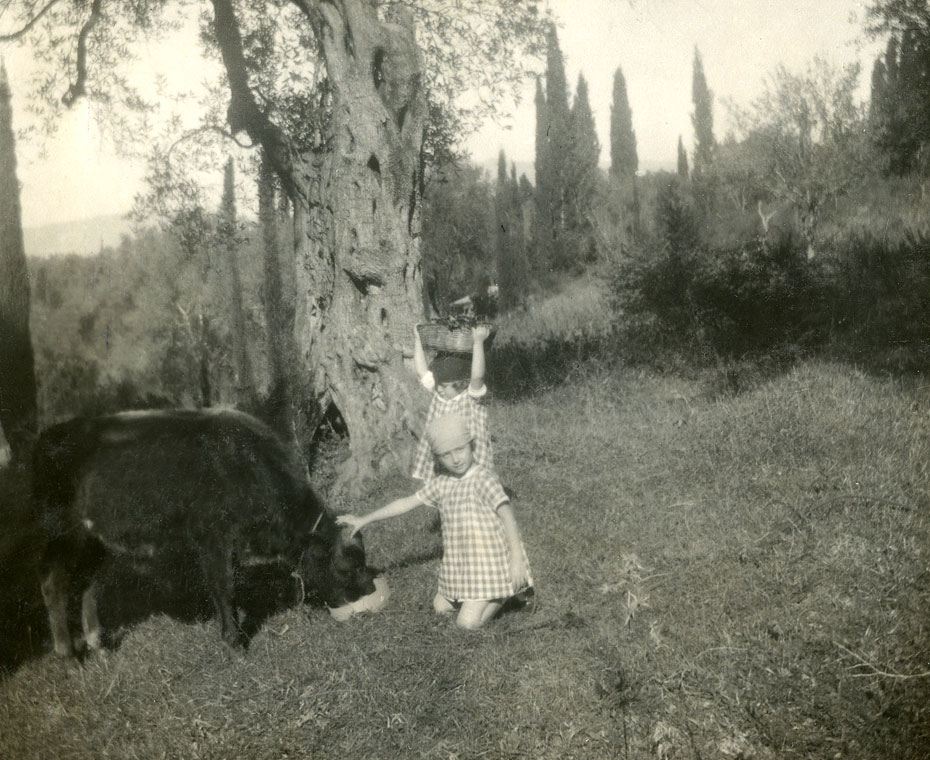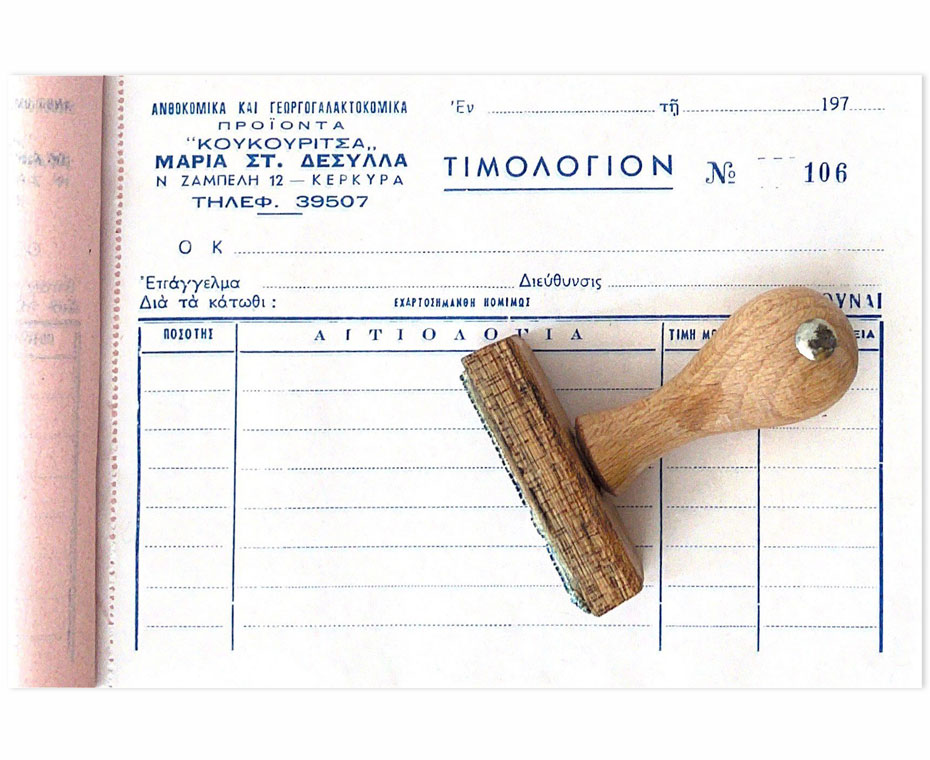A PRODUCTIVE ESTATE
“The island, particularly the division of Mezzo, is a continued garden, worthy of Alcinoos. Orang-es, lemons, pomegranates, almonds and figs grow to a great size and are seen in all directions; and all kinds of fruit-trees are dispersed through the extensive olive groves, mixed with the rich-est vineyards. The fields produce wheat, barley, oats, cotton, vetches, lentils french-beans, melons, water-melons and different kinds of peas and beans…”
Edward Dodwell, Journey to Greece, 1801
For more than two centuries, the Capodistrias family maintained a productive estate at Kou-kouritsa, taking advantage of the climate, the soil, and scientific knowledge about new methods of cultivation. People came from all the neighbouring villages to work in the olive grove, the vineyards, and the fields of the estate, making the Corfiot earth bear fruit, creating a ‘garden worthy of Alcinoοs.’
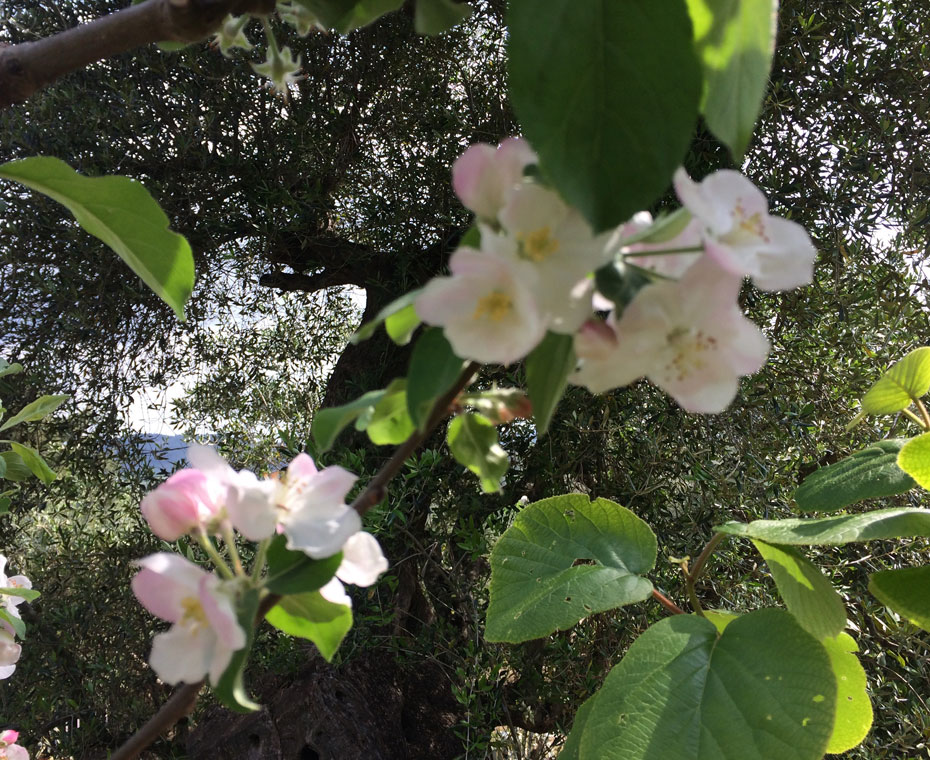
The olive grove
The tall, supple olive trees are the first image that comes to mind when one thinks of Corfu. The cultivation of the olive, which is especially favoured by the climate of the island, peaked in the 17th century thanks to the Venetian policy which aimed at increasing the production of olive oil. In 1623, the Most Serene Republic of Venice encouraged the inhabitants of the Ionian Islands to dig up the wild olives and plant new roots, subsidising the planting of every new tree.
From evidence that has survived in the Venetian state archives from 1766-1770, it appears that in Evropouli, the nearest village to Koukouritsa, there were 13,670 olive trees and four olive presses, while in neighbouring Potamos, there were 63,765 olive trees and 16 olive presses. It appears from the dowry agreement between Maria Capodistria and Stamatis Desyllas that, in 1934, there were 466 olive trees at Koukouritsa.
All work carried out in the olive grove was recorded in the estate’s management ledger. It began in summer, with the clearing of the ground around the trees. Harvesting of the fruit began at the end of October and could continue until March. Pruning took place at the same time as the harvest.
The oil was collected and stored in a cellar, near to the current entrance to the museum. All the members of the family were supplied with oil from Koukouritsa.
The vine
‘The landowners, who spend lengthy periods in these country residences, enjoy local wine, red and white, throughout the year, which, without artificial additives or other processing, approach the most famous of wines. In fact, they are more aromatic and pleasant to the taste. They are not, however, for sale, as they cannot withstand the long journey…’
Emmanuel Theotoky, Details sur Cofou 1826
At Koukouritsa, vines were cultivated to produce wine. The varieties cultivated were the Europe-an wine grape, Robola, and Muscat. Cultivation began in February and peaked in spring. It in-cluded raking the soil and pruning and watering the vines in summer. The harvest was in Sep-tember, and as is the case all over the world, it was a festival in which even the children of the family participated.
The potato
‘…This plant, the most precious of those from the New World that have enriched the old, is al-ready known on the island thanks to the French…’
This plant has a special connection with Ioannis Capodistrias due to his efforts to spread its culti-vation to Aegina and the Peloponnese after 1828. However, cultivation in the Ionian Islands had begun thirty years earlier, when the French, who succeeded the Venetians as rulers of the is-lands for a short period, introduced the plant and tried to encourage its cultivation. The potato is a plant that thrives easily, and an estate could produce three crops a year.
Illustrated representation of the potato plant, from a 19th century botanical collection.
In 1834, an article in the Ionic Anthology encouraged Corfiots to invest in growing potatoes, as these did not require much effort, produced a crop three times a year, were easy to cook, and were especially nutritious. According to the article, all this ensured that, ‘By cultivating this plant assiduously, the Ionian people will protect themselves against any food shortages during times of war and have a new commodity for sale during peacetime.’
Potatoes were grown in Koukouritsa from the 1860s until the late 1970s. From the detailed rec-ords of income and expenditure kept at the estate, it appears that seed potatoes were bought and planted in January. The harvest took place a few months later. The part of the estate that was given over to growing potatoes and corn was on the western slopes of the hill, to the right of the current entrance to the estate.
Besides potatoes and corn, seasonal vegetables were grown in Koukouritsa for the needs of the family, such as tomatoes, peppers, courgettes, and asparagus.
Citrus fruits
Citrus fruits comprise one of the basic crops grown throughout Corfu. They are especially success-ful in the area around Evropouli. The estate at Koukouritsa began producing lemons and Seville oranges in 1850, some of which were used for the needs of the family and the rest was sold. In the mid 20th century, when Maria Capodistria took over the estate, citrons, mandarins, grape-fruit, and Merlin oranges were grown on the estate.
The citrus fruit trees were grown over the east side of the hill. Work began in February and peaked in the spring months, mostly March and April. This was when they were pruned, the trunks painted with whitewash, and fertiliser put down. The summer months were the time for grafting and watering if necessary.
Flowers everywhere
In the 1930s, when Maria Capodistria-Desylla took over Koukouritsa, the garden quite literally bloomed. Countless flowerbeds around the house were planted with seasonal flowers in all col-ours. Generalias, zinnias bluebagos, gardenias, tulips, and cascading geraniums, gave colour to every season of the year. For many years, the gardener Spyros Poulimenos was responsible for the garden, and he supervised the planting, designs, and combinations in the flowerbeds.
Roses held pride of place among all the flowers gown on the estate. There were greenhouses along the eastern perimeter of the estate for their systematic production. Koukouritsa supplied baccara roses to the best flower shop in town, that of Giorgos Varotsis in Ano Plateia, as well as to high end hotels.
Excellent dairy products
In the middle of the 20th century, besides the basic crops, Maria Capodistria extended the produc-tion of dairy products–milk, butter, and cream–for which Koukouritsa became famous beyond the area of Middle Corfu. The butter produced was excellent. Whatever was not needed for consump-tion by the family was sent to the Nikolaki dairy in Corfu town.
Cows of breeds selected for their ability to produce milk grazed on the estate, which extended over a larger area than it does today. The cowsheds were on the eastern side of the estate, next to the greenhouse with the roses. About every 15 days, the supervisor of the estate and an assistant chilled the milk overnight so that it would be ready to be churned into butter the next day. The butter was prepared in the small room at the side of the house which today houses the unit called ‘Ioannis Capodistrias and the Greek state.’
